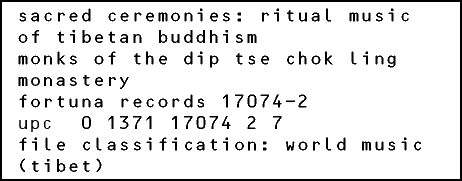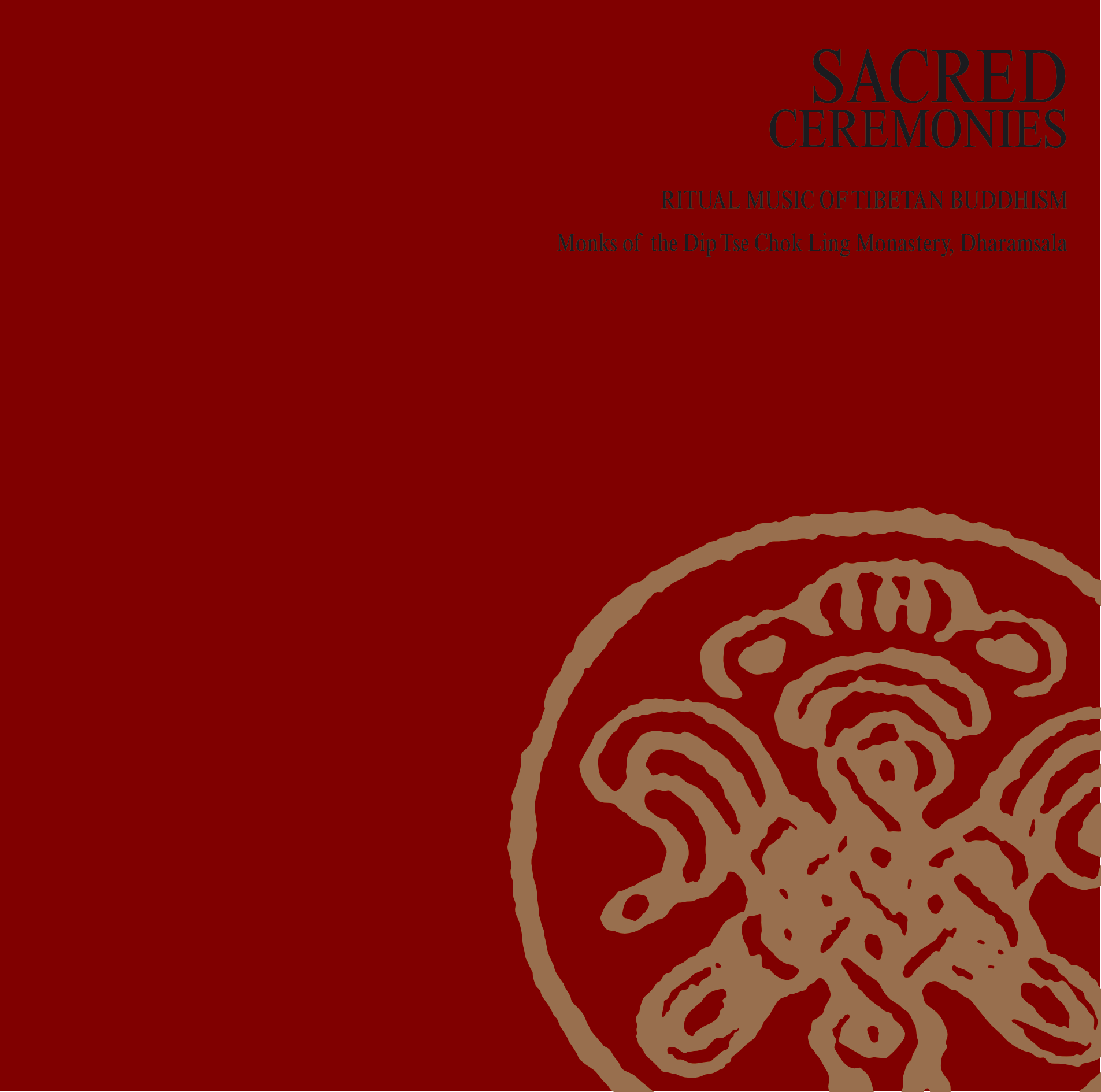 |
|||||||||||||||||||||
 
* featured in Heaven & Earth Directed by Oliver Stone Im 7. und 8. Jahrhundert gelangte der Buddhismus von Indien nach Tibet und vermischte sich dort mit der schamanischen Bön-Tradition. Sie ist bis heute lebendig: In den Maskentänzen, in magischen Ritualen oder wenn der Dalai Lama ein in Trance versetztes Orakel befragt. Während die Volksmusik immer wieder aus dem benachbarten China inspiriert wurde, ist die zeremonielle Musik der Mönche über die Jahrhunderte bis in unsere Zeit unverändert und eigenständig geblieben. Die Texte der mantrischen Gesänge sind meist Übersetzungen aus dem Sanskrit, die Art des Vortrags und die Instrumente dagegen unverkennbar tibetisch. Nach der chinesische Besetzung Tibets flohen mit dem Dalai Lama viele Lamas (tibetisch für guru, spiritueller Lehrer) zunächst nach Dharamsala, Nordindien und machten bald darauf den tibetischen Buddhismus (inklusive der einzigartigen Musik) in Europa und in den USA bekannt. Filme wie Little Buddha, Sieben Jahre in Tibet oder Kundun folgten - nicht zuletzt dank des unermüdlichen Einsatzes und der Popularität des Dalai Lama. Als Ergänzung zu den folgenden Aufnahmen, die Produzent David Parsons im Dip Tse Chok Ling Kloster in Dharamsala machte, seien seine eigenen Ambient-CDs Himalaya, Tibetan Plateau, Yatra, Dorje Ling und Parikrama empfohlen. Jedes der über 3000 Klöster des Alten Tibet kreierte um das gleich bleibende Zentrum der mantrischen Gesänge seine eigene rituelle Musik. Das im 18. Jahrhundert gegründete Kloster Dip Tse Chok Ling nahm „seine“ Musik als eine Art innerer Architektur mit nach Dharamsala, der Exilresidenz des Dalai Lama. Die auf tiefstem Basston gesungenen Vokale und Silben der heiligen Texte schwingen mit Ober- und Untertönen. Im Unterschied zum westlichen oder auch dem mongolischen, viel feineren Obertongesang ist dabei keine „Obertonmelodie“ beabsichtigt. Ästhetik im Sinne unseres Musikverständnisses ist nicht das Ziel. Das Donnergrollen der fast 4 Meter langen Metallhörner (Dung Chen), die nasalen Gewebe der Oboen (Gya Ling), das Scheppern der großen Zymbeln (Sil und Büp), das Vibrieren der Glocken (Drilbu) - dies alles soll Eindrücke tiefer Meditation spiegeln, jenseits der Unterscheidung zwischen Außen- und Innenwelt. Klänge des Bardo, vor und nach dem Tod. the projectLying in the shadows of the magnificent Himalayas, the village of Dharamsala is at the heart of Tibetan Buddhism. In this modest village where the first great rock wall of the Himalayas rises up from the plains of India, the Dalai Lama lives in exile among numerous followers. From the center of town, a rugged pathway leads to the Dip Tse Chok Ling Monastery School, home to over forty monks and students who have dedicated their lives to spiritual growth and contemplation. Sacred Ceremonies: Ritual Music of Tibetan Buddhism crosses the threshold of this sanctuary to explore the vibrant sounds of the monks' ancient musical meditations with clarity and sensitivity. Digitally recorded on location by David Parsons, these performances of six traditional rituals resonate with a wide variety of tone colors and techniques mastered through the ancient art of multiphonic chanting. This powerful sound is believed to emanate only from those who have attained a wisdom that transcends the self. Each vocalist produces a chord encompassing two or three tones through the intricate manipulation of overtones. Breathing plays an integral part in the creation of this remarkable sound; even the gya ling (Tibetan oboe) players use circular breathing to produce continuous tones from their instruments. The musical meditations are enhanced by rousing blasts of the dung chen, a pair of twelve foot long metal trumpets. Dramatic beats from bass drums and stirring splashes from large cymbals add to the sonic intensity of these exhilarating rituals. the artistsThe Dip Tse Chok Ling Monastery was founded in 18th century Tibet by the Venerable Yongzin Yeshi Gyaltsen, tutor to the eighth Dalai Lama. The lineage of the monastery continued until 1959, when Tibet suffered the devastating Lhasa uprising. Together with over 3,000 other practicing monasteries, Dip Tse Chok Ling was razed to the ground. Fortunately, its inmates managed to salvage many religious artifacts and documents, and escape with them to Nepal. In 1976, the Dip Tse Chok Ling Monastery was re–established in Dharamsala, India, by Lama Tashi, who still resides at the monastery. While he has retired from leadership of the monastery, the organization still follows the traditional system of education, focusing on Buddhist philosophy, logic, and dialect, balanced with the practice of Tibetan language, art, and ceremonial music. In 1989, producer David Parsons and his wife, Kay, made three trips to Dharamsala, to record the ritual music of the Dip Tse Chok Ling Monastery. biographydiscographytracklist
|
|||||||||||||||||||||
|
|
|||||||||||||||||||||
 |


